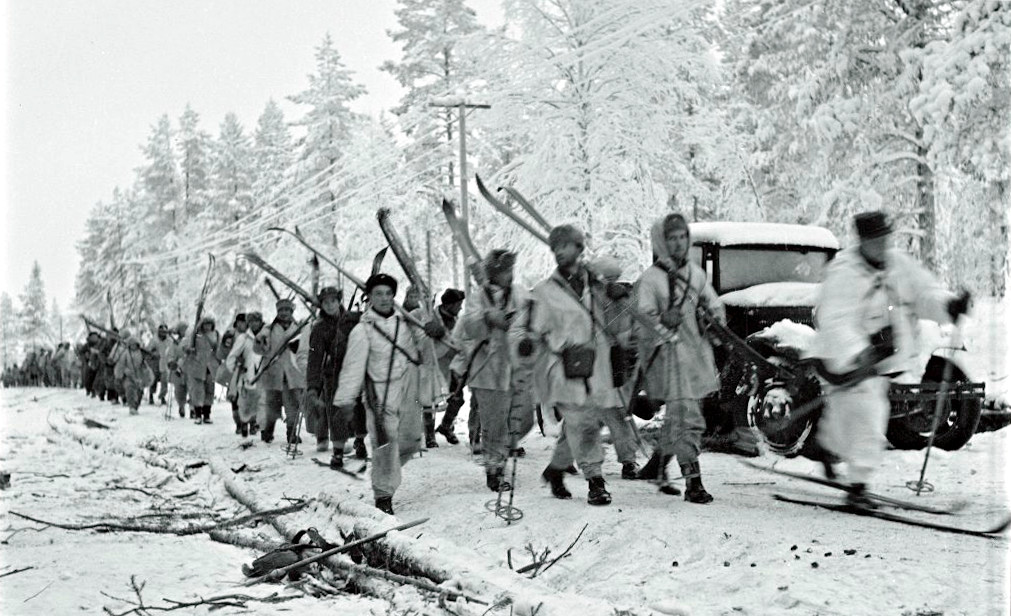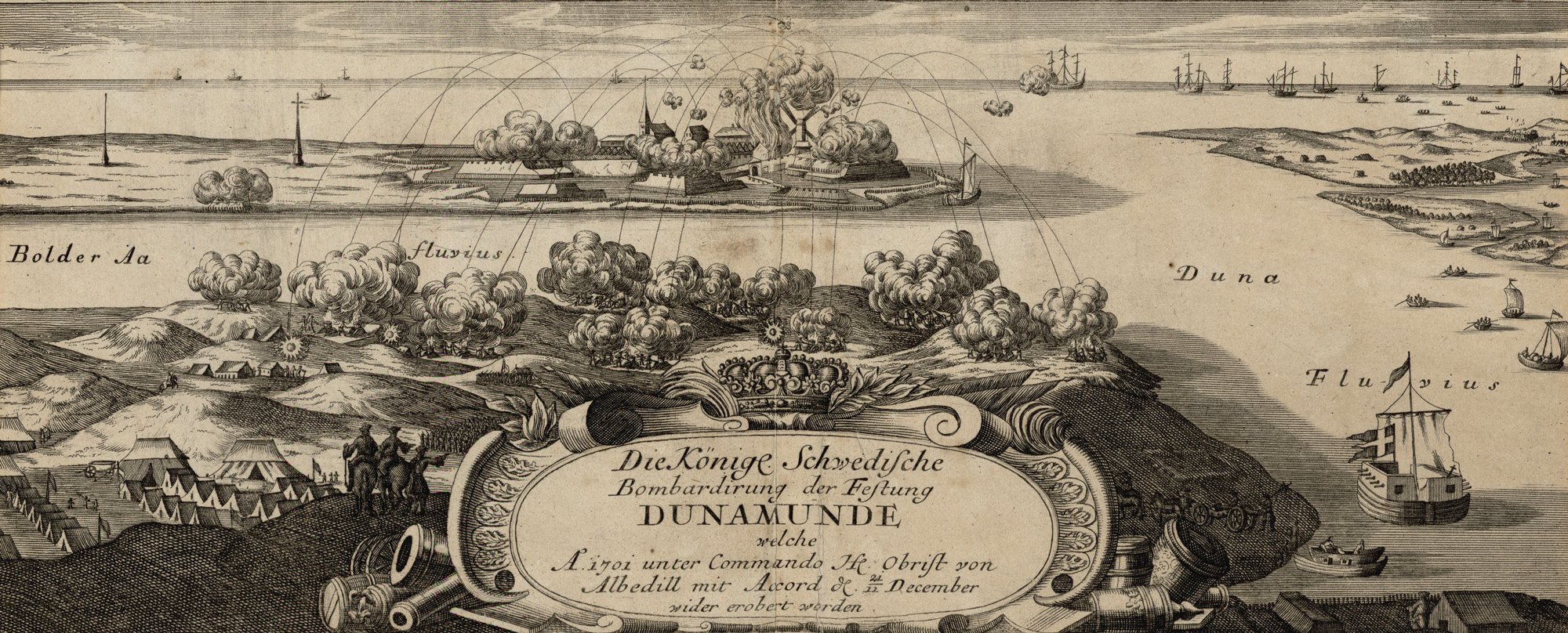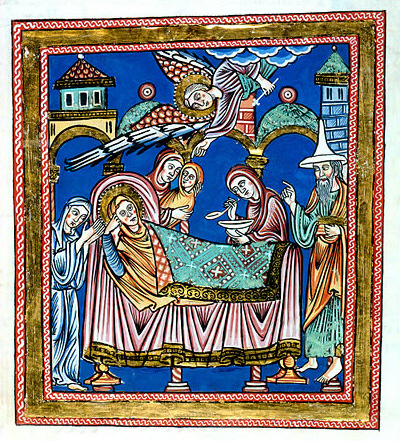|
Capture Of Daugavgrīva (1608)
The Capture of Daugavgriva by Swedish forces in July 1608 occurred during the Polish–Swedish War (1600–1611). Daugavgrīva castle (Polish: ''Dynemund'', Swedish: ''Dünamünde'') was the first objective of the Swedish forces during the campaign of 1608, due to its location near ( Daugavgrīva is Riga suburb today), and the fact that it could be used to block that city from the sea. When the Swedes, numbering 8000 troops and led by [...More Info...] [...Related Items...] OR: [Wikipedia] [Google] [Baidu] |
Polish–Swedish War (1600–1611)
The Polish–Swedish War (1600–1611) was a continuation of struggle between Sweden and the Polish–Lithuanian Commonwealth over control of Livonia and Estonia, as well as the dispute over the Swedish throne between Charles IX of Sweden and Sigismund III of Poland. After skirmishes, sieges and battles often aborted by Jan Karol Chodkiewicz, a truce was signed until the later invasion by the Russians. Origins This conflict between the Polish–Lithuanian Commonwealth and Sweden traces its roots to the War against Sigismund. In this civil war (1597–1599), Sigismund III Vasa, at one time king of both the Commonwealth and Sweden, lost the throne of Sweden. Few Commonwealth troops participated in that conflict, and it is mostly regarded as a Swedish civil war, not part of the Polish–Swedish wars. After an early stalemate, Sigismund was defeated at the Battle of Stångebro in 1598. By 1599 Sigismund was dethroned by his uncle, Duke Charles and forced to retreat to the Commonw ... [...More Info...] [...Related Items...] OR: [Wikipedia] [Google] [Baidu] |
Riga
Riga (; lv, Rīga , liv, Rīgõ) is the capital and largest city of Latvia and is home to 605,802 inhabitants which is a third of Latvia's population. The city lies on the Gulf of Riga at the mouth of the Daugava river where it meets the Baltic Sea. Riga's territory covers and lies above sea level, on a flat and sandy plain. Riga was founded in 1201 and is a former Hanseatic League member. Riga's historical centre is a UNESCO World Heritage Site, noted for its Art Nouveau/Jugendstil architecture and 19th century wooden architecture. Riga was the European Capital of Culture in 2014, along with Umeå in Sweden. Riga hosted the 2006 NATO Summit, the Eurovision Song Contest 2003, the 2006 IIHF Men's World Ice Hockey Championships, 2013 World Women's Curling Championship and the 2021 IIHF World Championship. It is home to the European Union's office of European Regulators for Electronic Communications (BEREC). In 2017, it was named the European Region of Gastronomy. ... [...More Info...] [...Related Items...] OR: [Wikipedia] [Google] [Baidu] |
17th Century In Latvia
17 (seventeen) is the natural number following 16 and preceding 18. It is a prime number. Seventeen is the sum of the first four prime numbers. In mathematics 17 is the seventh prime number, which makes seventeen the fourth super-prime, as seven is itself prime. The next prime is 19, with which it forms a twin prime. It is a cousin prime with 13 and a sexy prime with 11 and 23. It is an emirp, and more specifically a permutable prime with 71, both of which are also supersingular primes. Seventeen is the sixth Mersenne prime exponent, yielding 131,071. Seventeen is the only prime number which is the sum of four consecutive primes: 2, 3, 5, 7. Any other four consecutive primes summed would always produce an even number, thereby divisible by 2 and so not prime. Seventeen can be written in the form x^y + y^x and x^y - y^x, and, as such, it is a Leyland prime and Leyland prime of the second kind: :17=2^+3^=3^-4^. 17 is one of seven lucky numbers of Euler which produc ... [...More Info...] [...Related Items...] OR: [Wikipedia] [Google] [Baidu] |
Battles Involving The Polish–Lithuanian Commonwealth
A battle is an occurrence of combat in warfare between opposing military units of any number or size. A war usually consists of multiple battles. In general, a battle is a military engagement that is well defined in duration, area, and force commitment. An engagement with only limited commitment between the forces and without decisive results is sometimes called a skirmish. The word "battle" can also be used infrequently to refer to an entire operational campaign, although this usage greatly diverges from its conventional or customary meaning. Generally, the word "battle" is used for such campaigns if referring to a protracted combat encounter in which either one or both of the combatants had the same methods, resources, and strategic objectives throughout the encounter. Some prominent examples of this would be the Battle of the Atlantic, Battle of Britain, and Battle of Stalingrad, all in World War II. Wars and military campaigns are guided by military strategy, whereas bat ... [...More Info...] [...Related Items...] OR: [Wikipedia] [Google] [Baidu] |
Battles Involving Sweden
A battle is an occurrence of combat in warfare between opposing military units of any number or size. A war usually consists of multiple battles. In general, a battle is a military engagement that is well defined in duration, area, and force commitment. An engagement with only limited commitment between the forces and without decisive results is sometimes called a skirmish. The word "battle" can also be used infrequently to refer to an entire operational campaign, although this usage greatly diverges from its conventional or customary meaning. Generally, the word "battle" is used for such campaigns if referring to a protracted combat encounter in which either one or both of the combatants had the same methods, resources, and strategic objectives throughout the encounter. Some prominent examples of this would be the Battle of the Atlantic, Battle of Britain, and Battle of Stalingrad, all in World War II. Wars and military campaigns are guided by military strategy, wh ... [...More Info...] [...Related Items...] OR: [Wikipedia] [Google] [Baidu] |
Conflicts In 1608
Conflict may refer to: Arts, entertainment, and media Films * ''Conflict'' (1921 film), an American silent film directed by Stuart Paton * ''Conflict'' (1936 film), an American boxing film starring John Wayne * ''Conflict'' (1937 film), a Swedish drama film directed by Per-Axel Branner * ''Conflict'' (1938 film), a French drama film directed by Léonide Moguy * ''Conflict'' (1945 film), an American suspense film starring Humphrey Bogart * ''Catholics: A Fable'' (1973 film), or ''The Conflict'', a film starring Martin Sheen * ''Judith'' (1966 film) or ''Conflict'', a film starring Sophia Loren * ''Samar'' (1999 film) or ''Conflict'', a 1999 Indian film by Shyam Benegal Games * ''Conflict'' (series), a 2002–2008 series of war games for the PS2, Xbox, and PC * ''Conflict'' (video game), a 1989 Nintendo Entertainment System war game * '' Conflict: Middle East Political Simulator'', a 1990 strategy computer game Literature and periodicals * ''Conflict'' (novel ... [...More Info...] [...Related Items...] OR: [Wikipedia] [Google] [Baidu] |
Tower Of Daugavgriva
A tower is a tall structure, taller than it is wide, often by a significant factor. Towers are distinguished from masts by their lack of guy-wires and are therefore, along with tall buildings, self-supporting structures. Towers are specifically distinguished from buildings in that they are built not to be habitable but to serve other functions using the height of the tower. For example, the height of a clock tower improves the visibility of the clock, and the height of a tower in a fortified building such as a castle increases the visibility of the surroundings for defensive purposes. Towers may also be built for observation, leisure, or telecommunication purposes. A tower can stand alone or be supported by adjacent buildings, or it may be a feature on top of a larger structure or building. Etymology Old English ''torr'' is from Latin ''turris'' via Old French ''tor''. The Latin term together with Greek τύρσις was loaned from a pre-Indo-European Mediterranean languag ... [...More Info...] [...Related Items...] OR: [Wikipedia] [Google] [Baidu] |
Battle Of Daugavgriva (1609)
A battle is an occurrence of combat in warfare between opposing military units of any number or size. A war usually consists of multiple battles. In general, a battle is a military engagement that is well defined in duration, area, and force commitment. An engagement with only limited commitment between the forces and without decisive results is sometimes called a skirmish. The word "battle" can also be used infrequently to refer to an entire operational campaign, although this usage greatly diverges from its conventional or customary meaning. Generally, the word "battle" is used for such campaigns if referring to a protracted combat encounter in which either one or both of the combatants had the same methods, resources, and strategic objectives throughout the encounter. Some prominent examples of this would be the Battle of the Atlantic, Battle of Britain, and Battle of Stalingrad, all in World War II. Wars and military campaigns are guided by military strategy, wher ... [...More Info...] [...Related Items...] OR: [Wikipedia] [Google] [Baidu] |
Wikimapia
Wikimapia is a geographic online encyclopedia project. The project implements an interactive "clickable" web map that utilizes Google Maps with a geographically-referenced wiki system, with the aim to mark and describe all geographical objects in the world. Wikimapia was created by Alexandre Koriakine and Evgeniy Saveliev in May 2006. The data, a crowdsourced collection of places marked by registered users and guests, has grown to just under 28,000,000 objects , and is released under the Creative Commons License Attribution-ShareAlike (CC BY-SA). Although the project's name is reminiscent of that of Wikipedia, and the creators share parts of the "wiki" philosophy, it is not a part of the non-profit Wikimedia Foundation family of wikis. Since 2018, following years of declining popularity, the site has gone nearly inactive with the site's owners having been unable to pay for the usage of Google Maps and the site's social media accounts having remained derelict. A study from 2017 ... [...More Info...] [...Related Items...] OR: [Wikipedia] [Google] [Baidu] |
Daugavgrīva
Daugavgrīva (german: Dünamünde; pl, Dynemunt; russian: Усть-Двинск or ''Ust`-Dvinsk'') is a neighbourhood in North West Riga, Latvia on the left bank of the Daugava river. In this neighbourhood there is a Swedish-built fortress on the Daugava River's left bank, commanding its mouth. Fortress In Vecdaugava, on the right or opposite side of the Daugava (German: ''Düna'') outside the borders of the contemporary neighborhood, was in 1208 Dünamünde castle built by the Teutonic Knights, which initially served as a monastery. The Swedish fortress of Neumünde on the right bank, designed in a Dutch style by General Rothenburg in 1641, replaced the ruined Dünamünde Castle by 1680. In 1695 the Commandant was captain Heinrich Nicolaus Rüdinger, forefather of future Patriarch Alexy II of Russia. Rüdinger was knighted by Charles XI of Sweden. Joachim Cronman later became the Commandant and he died on March 5, 1703. After the fortress was seized by the Russian ... [...More Info...] [...Related Items...] OR: [Wikipedia] [Google] [Baidu] |
Daugavgrīva Castle
Daugavgrīva Castle (german: Dünamünde; pl, Dynemunt; russian: Усть-Двинск or ''Ust`-Dvinsk'') is a former monastery converted into a castle, located at Vecdaugava oxbow on right bank of Daugava, in the northern part of Riga city, Latvia. Nowadays here are seen only earthen ramparts. History The first settlement, Daugavgrīva Abbey, was established on the right bank of the Daugava river, 13 miles from Bishop Albert of Riga's residence in Riga, by Cistercian monks from Pforta in 1205. Theoderich von Treyden was an early abbot, while during the 1210s Count Bernhard II of Lippe was its abbot. During a raid of tribal Curonians in 1228,See the ''Livonian Chronicle by Hermann de Wartberge, as citehere the monastery and its tombs were destroyed, although the monks rebuilt the abbey after fighting died down. They also had to endure abuse by the undisciplined crusaders of the Livonian Order. Those knights were defeated at the Battle of Saule, however, and their remna ... [...More Info...] [...Related Items...] OR: [Wikipedia] [Google] [Baidu] |
Joachim Frederick Von Mansfeld
Joachim (; ''Yəhōyāqīm'', "he whom Yahweh has set up"; ; ) was, according to Christian tradition, the husband of Saint Anne and the father of Mary, the mother of Jesus. The story of Joachim and Anne first appears in the Biblical apocryphal Gospel of James. His feast day is 26 July, a date shared with Saint Anne. In Christian tradition The story of Joachim, his wife Anne (or Anna), and the miraculous birth of their child Mary, the mother of Jesus, was told for the first time in the 2nd-century apocryphal infancy-gospel the Gospel of James (also called Protoevangelium of James). Joachim was a rich and pious man, who regularly gave to the poor. However, Charles Souvay, writing in the ''Catholic Encyclopedia'', says that the idea that Joachim possessed large herds and flocks is doubtful. At the temple, Joachim's sacrifice was rejected, as the couple's childlessness was interpreted as a sign of divine displeasure. Joachim consequently withdrew to the desert, where he fasted a ... [...More Info...] [...Related Items...] OR: [Wikipedia] [Google] [Baidu] |






